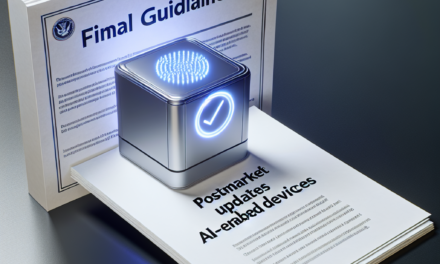Cigna Links Executive Pay to Customer Satisfaction Metrics
In the competitive landscape of healthcare, customer satisfaction has emerged as a critical metric for success. Cigna, one of the leading health services companies, has taken a bold step by linking executive compensation to customer satisfaction metrics. This innovative approach not only aligns the interests of executives with those of customers but also sets a precedent for the industry. In this article, we will explore the implications of this strategy, its impact on corporate culture, and the broader significance for the healthcare sector.
Understanding the Link Between Executive Pay and Customer Satisfaction
The decision to tie executive compensation to customer satisfaction metrics is rooted in the understanding that satisfied customers are more likely to remain loyal, recommend services, and contribute to the company’s bottom line. Cigna’s approach reflects a growing trend among corporations to prioritize customer experience as a key performance indicator (KPI).
By linking pay to customer satisfaction, Cigna aims to create a culture where executives are incentivized to prioritize the needs and experiences of their customers. This strategy is not merely about financial performance; it encompasses a holistic view of the company’s impact on its stakeholders.
- Alignment of Interests: When executives are rewarded based on customer satisfaction, their goals align more closely with those of customers. This alignment can lead to improved service delivery and innovation.
- Accountability: Tying pay to customer satisfaction metrics holds executives accountable for the experiences of their customers. This accountability can drive better decision-making and resource allocation.
- Long-term Focus: Customer satisfaction is often a long-term metric. By linking pay to this metric, Cigna encourages executives to think beyond short-term financial gains and focus on sustainable growth.
The Metrics Used to Measure Customer Satisfaction
Cigna employs a variety of metrics to gauge customer satisfaction, ensuring a comprehensive understanding of customer experiences. These metrics include Net Promoter Score (NPS), Customer Satisfaction Score (CSAT), and Customer Effort Score (CES). Each of these metrics provides unique insights into different aspects of customer experience.
Net Promoter Score (NPS)
NPS is a widely used metric that measures customer loyalty and the likelihood of customers recommending a company’s services. It is calculated by asking customers a single question: “On a scale of 0 to 10, how likely are you to recommend our services to a friend or colleague?” Customers are then categorized into promoters, passives, and detractors.
Cigna uses NPS to assess overall customer sentiment and identify areas for improvement. A high NPS indicates a strong customer base that is likely to advocate for the company, while a low NPS signals potential issues that need to be addressed.
Customer Satisfaction Score (CSAT)
CSAT measures customer satisfaction with a specific interaction or service. Customers are typically asked to rate their satisfaction on a scale, and the results provide immediate feedback on service quality. Cigna uses CSAT to evaluate the effectiveness of its customer service teams and the quality of its healthcare offerings.
By analyzing CSAT scores, Cigna can identify trends and make data-driven decisions to enhance customer experiences. For instance, if CSAT scores drop after a new service launch, the company can investigate the underlying issues and make necessary adjustments.
Customer Effort Score (CES)
CES measures the ease with which customers can interact with a company. It focuses on the effort required by customers to resolve issues or access services. A lower CES indicates a smoother customer experience, while a higher CES suggests friction points that need to be addressed.
Cigna uses CES to streamline processes and reduce barriers for customers. By minimizing customer effort, the company can enhance satisfaction and loyalty, ultimately leading to better business outcomes.
Impact on Corporate Culture and Employee Engagement
Linking executive pay to customer satisfaction metrics has profound implications for Cigna’s corporate culture. This strategy fosters a customer-centric mindset throughout the organization, encouraging employees at all levels to prioritize customer experiences.
Creating a Customer-Centric Culture
A customer-centric culture is one where the needs and preferences of customers are at the forefront of decision-making. By tying executive compensation to customer satisfaction, Cigna sends a clear message that customer experience is a top priority. This cultural shift can lead to several positive outcomes:
- Empowerment: Employees feel empowered to make decisions that benefit customers, knowing that their efforts contribute to the company’s success.
- Collaboration: A focus on customer satisfaction encourages collaboration across departments, as teams work together to enhance the overall customer experience.
- Innovation: Employees are more likely to propose innovative solutions when they understand that their contributions directly impact customer satisfaction.
Enhancing Employee Engagement
When employees see a direct link between their work and customer satisfaction, it can lead to higher levels of engagement and job satisfaction. Cigna’s approach fosters a sense of purpose among employees, as they understand that their efforts contribute to the well-being of customers.
Engaged employees are more likely to go above and beyond in their roles, leading to improved service delivery and customer experiences. Cigna’s commitment to customer satisfaction creates a positive feedback loop, where satisfied employees lead to satisfied customers.
Case Studies: Success Stories from Cigna
Cigna’s strategy of linking executive pay to customer satisfaction metrics has yielded positive results, as evidenced by several case studies. These success stories highlight the effectiveness of this approach in driving customer loyalty and business growth.
Case Study 1: Improved NPS Scores
In one instance, Cigna implemented a new customer service training program aimed at enhancing employee interactions with customers. By focusing on empathy and problem-solving skills, the company sought to improve NPS scores.
After the training, Cigna saw a significant increase in NPS, with the percentage of promoters rising by 15%. This improvement not only boosted executive compensation but also reinforced the importance of customer satisfaction within the organization.
Case Study 2: Streamlined Claims Process
Another success story involved Cigna’s efforts to streamline its claims process. By analyzing CES data, the company identified bottlenecks that were causing frustration for customers. Executives were incentivized to address these issues, leading to a complete overhaul of the claims process.
As a result, CES scores improved dramatically, and customer complaints related to claims processing decreased by 30%. This success not only enhanced customer satisfaction but also demonstrated the effectiveness of linking pay to customer-centric initiatives.
The Broader Implications for the Healthcare Industry
Cigna’s innovative approach to linking executive pay to customer satisfaction metrics has broader implications for the healthcare industry as a whole. As healthcare organizations increasingly recognize the importance of customer experience, Cigna’s strategy serves as a model for others to follow.
Shifting Industry Standards
The healthcare industry has traditionally focused on clinical outcomes and financial performance. However, Cigna’s approach signals a shift towards a more holistic view of success that includes customer satisfaction as a key metric. This shift can lead to several industry-wide changes:
- Increased Competition: As more companies adopt customer-centric strategies, competition will intensify, driving innovation and improvements in service delivery.
- Regulatory Changes: Regulatory bodies may begin to emphasize customer satisfaction metrics in their assessments of healthcare organizations, further incentivizing companies to prioritize customer experience.
- Consumer Empowerment: As customers become more aware of their options, they will demand better experiences, pushing healthcare organizations to adapt and improve.
Encouraging Best Practices
Cigna’s success in linking executive pay to customer satisfaction metrics encourages other healthcare organizations to adopt similar practices. By sharing best practices and success stories, the industry can collectively improve customer experiences and outcomes.
Healthcare organizations can learn from Cigna’s approach by implementing their own customer satisfaction metrics and linking them to executive compensation. This alignment can drive positive change and foster a culture of accountability and customer focus.
Conclusion: The Future of Customer-Centric Healthcare
Cigna’s decision to link executive pay to customer satisfaction metrics represents a significant shift in the healthcare industry. By prioritizing customer experience, Cigna not only enhances its competitive advantage but also sets a standard for others to follow. The alignment of executive interests with those of customers fosters a culture of accountability, innovation, and collaboration.
As the healthcare landscape continues to evolve, organizations that prioritize customer satisfaction will be better positioned for success. Cigna’s approach serves as a powerful reminder that in today’s market, satisfied customers are not just a goal; they are a critical driver of business success.
In summary, Cigna’s strategy highlights the importance of customer satisfaction in the healthcare industry. By linking executive compensation to customer experience metrics, the company is paving the way for a more customer-centric future. As other organizations take note and adopt similar practices, the entire industry stands to benefit from improved customer experiences and outcomes.





